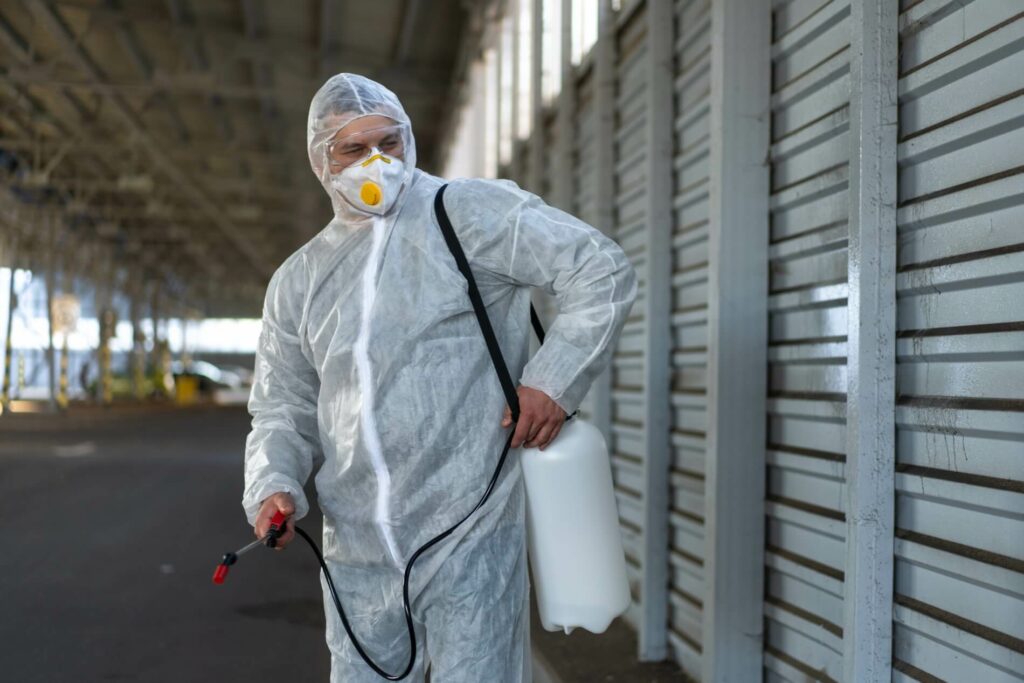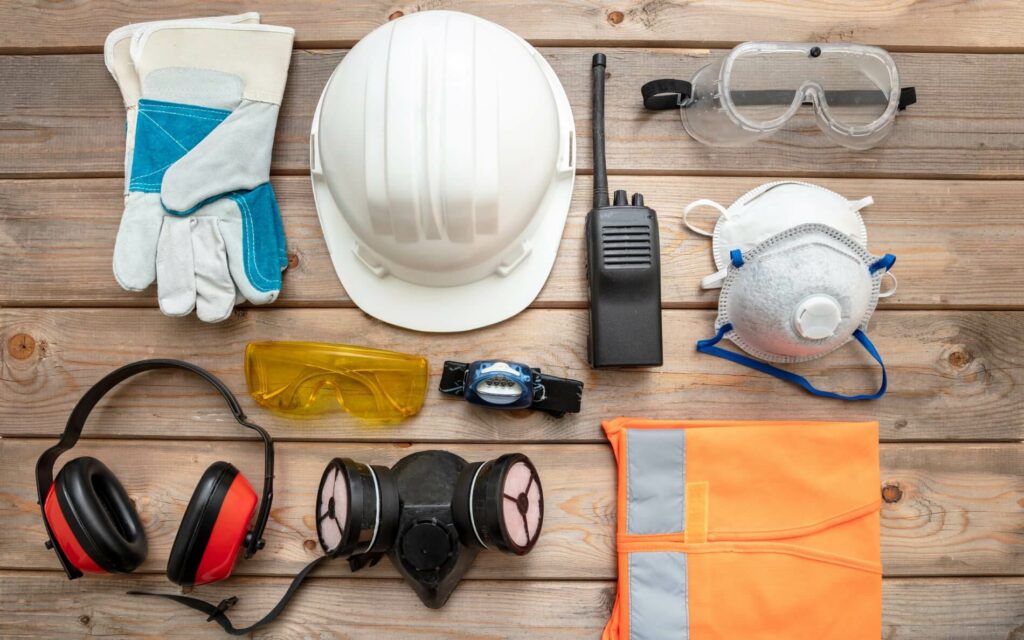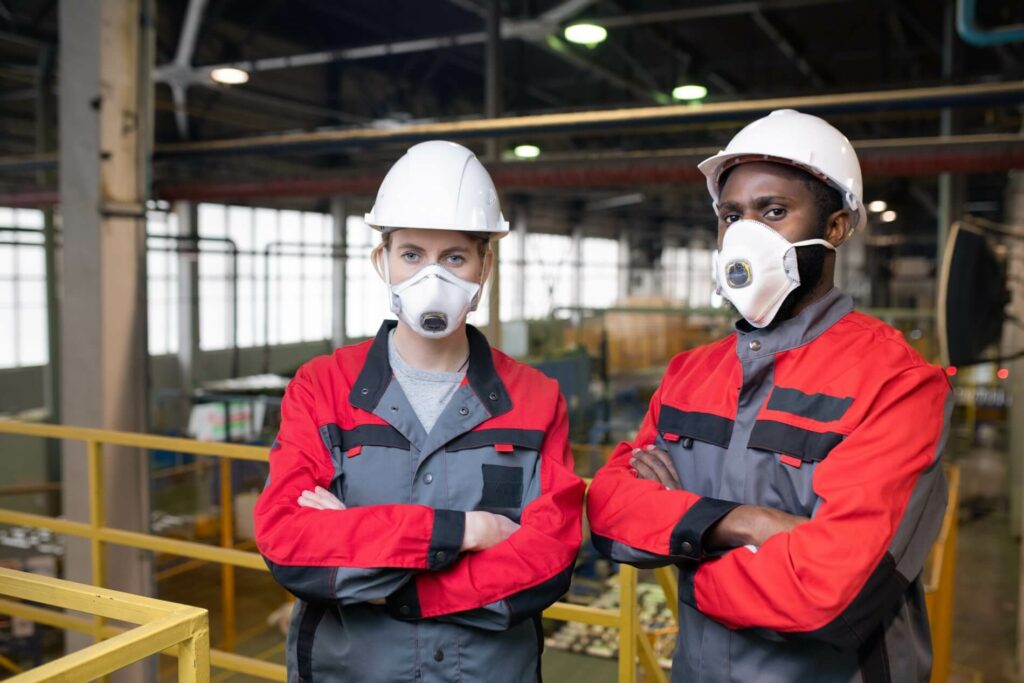What are the obligations of respiratory protection in 2024?
Laws, regulations, operation and species
Respiratory protection is an important issue when it comes to workplace safety. It is not for nothing that wearing respiratory protection is made mandatory in some situations.
On this page, we take a closer look at the importance of respiratory protection and exactly how respiratory protection works.
Why is respiratory protection mandatory?
Respiratory protection is mandatory in situations where workers are exposed to harmful substances. This may be the case, for example, in work involving dust, fumes, gases or smoke. Wearing respiratory protection is also mandatory in situations where there is a risk of oxygen deprivation.
The purpose of respiratory protection is to protect workers' health. Indeed, exposure to harmful substances can lead to serious health problems, such as respiratory irritation, lung disease and even cancer.
Advice on risks, measures and the right PPE around respiratory protection? Contact an adviser from Wijngaarden VeiligGoed without obligation. For all contact details please refer to our contact page.

Respiratory protection laws and regulations
In the Netherlands, there are various laws and regulations governing respiratory protection. One is the Working Conditions Act, which stipulates that employers are obliged to ensure a safe working environment. This includes protecting employees from harmful substances.
In addition, there are specific regulations that deal with respiratory protection, such as the European Personal Protective Equipment (PPE) Directive, which determines, among other things, which requirements respiratory protective equipment must meet. There is also the Dutch standard NEN-EN 529:2005, which specifies the requirements to be met by respiratory protection equipment.
Respiratory protection laws and regulations summarised:
- Occupational Health and Safety Act: employers are obliged to ensure a safe working environment, including protecting workers from harmful substances.
- European Personal Protective Equipment (PPE) Directive: determines the requirements that respiratory protection equipment must meet.
- Dutch standard NEN-EN 529:2005: determines the requirements that respiratory protection equipment must meet.
It is important to comply with these laws and regulations to ensure a safe working environment and avoid fines and liability.
At Wijngaarden VeiligGoed, we have extensive knowledge of the laws and regulations that deal with respiratory protection, we can thus help you comply with these regulations.
We offer not only the right respiratory protection, but also trainings and workshops to teach you and your employees how to properly use and maintain them.

How does compulsory respiratory protection work?
The purpose of respiratory protection, which is to ensure that workers do not inhale harmful substances, can be achieved in several ways. A common variant of respiratory protection is the use of a filter.
Filter
A filter stops harmful substances before they are inhaled. Filters can stop different types of substances, for example dust particles, gases or vapours. It is important to use the right filter suitable for the substances workers are exposed to.
Not sure if you are using correct respiratory protection? Get advice from our PPE advisers. Based on the context of the workplace, they offer appropriate advice on the use of PPE.
The importance of proper respiratory protection
Because it is very important to use the right respiratory protection. Indeed, wearing respiratory protection can provide false safety if it is not used properly or if the wrong respiratory protection is used. It is therefore important to always choose the right respiratory protection, suitable for the work and the substances workers are exposed to.

Types of respiratory protection
There are several types breathing protection available, each suitable for different situations. Below is an overview of the most common types of respiratory protection:
- Dust masks: suitable for protection against dust particles.
- Half-face masks: suitable for protection against gases and vapours.
- Full-face masks: suitable for protection against gases, vapours and dust particles.
- Air caps: suitable for protection against dust particles.
Tips on the use of mandatory respiratory protection
Some tips on using respiratory protection:
- Make sure the respiratory protection fits properly. An ill-fitting respirator does not provide optimal protection.
- Regularly check that the respiratory protection is still working properly and replace it if necessary.
- Always use appropriate respiratory protection for the activities and substances workers are exposed to.
- Ensure workers are properly trained in the use of respiratory protection and the risks of harmful substances.
Wijngaarden VeiligGoed
Wijngaarden VeiligGoed is the expert in personal protective equipment (PPE), which includes respiratory protection. With years of experience and extensive knowledge of workplace safety laws and regulations, we can always provide you with the best tailor-made advice.
Our expert staff can help you choose the right respiratory protection for your specific situation. Whether protecting workers from dust particles or hazardous fumes, we have the right solution for you.
At Wijngaarden VeiligGoed, we believe it is important that you can rely on the quality of our products and our expertise.
We are therefore always ready to answer your questions and provide you with the best advice on respiratory protection and other PPE. Together, we ensure a safe working environment for you and your employees.

Our advisors are happy to help you or make an appointment if you wish.
Phone: +31 184 434 455
Mail: info@veiliggoed.nl
